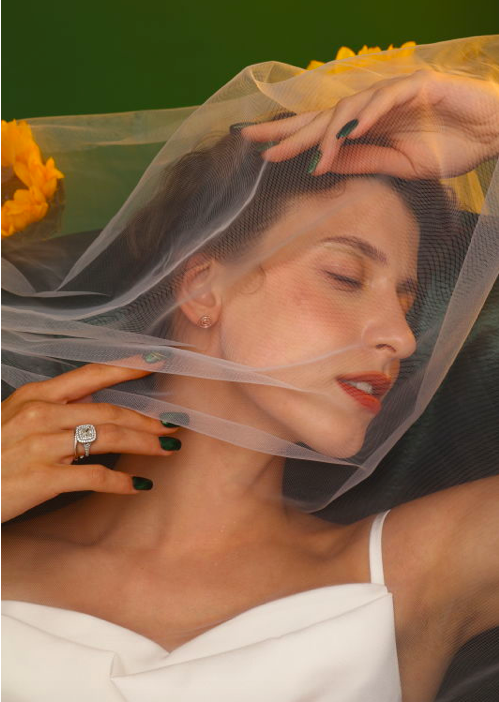Just as clothing fashion comes and goes, popular diamond engagement ring styles change. An engagement ring is more than just a simple piece of jewelry. It is a sign of commitment. Presently, a step-cut stone diamond that is shaped as a square is in fashion. But round wedding diamond rings have remained a staple in engagement and wedding.
Let’s take a closer look at the evolution of diamond weddings or engagement rings over the years in the USA.
The Rise in Popularity of Lab-Grown Diamonds
Lab-grown diamonds also called man-made diamonds or cultivated diamonds, consist of a carbon atom structure; these diamonds have the same optical and chemical characteristics of a regular diamond crystal formed by the geological process of nature. The price of lab-grown diamonds is usually lower than naturally-formed diamonds. Moreover, in the USA the price of lab-grown diamonds keeps dropping. This is primarily because a lab-grown diamond doesn’t have a resale value.
The Existing Types of Lab-Grown Diamonds
There are different types of lab-created diamonds. Let’s take a look at them.
- Lab-grown diamonds from carbon ashes (pets/human)
- Lab-grown diamonds from carbon hair (wedding/engagement)
- Lab-grown diamonds from any carbon source (used in Fashion)
The Lab-Grown Diamonds Technology
1. CVD method
A CVD diamond is created using a process known as Chemical Vapor Deposition. It is a process that starts with the diamond seed crystal in a vacuum chamber, usually from a high-quality synthetic diamond. Then methane is pumped into the chamber and then broken down to carbon atoms, which accumulate on the crystal for forming a diamond. Apart from natural gas, the diamond crystal is subjected to high pressures and temperatures inside the chamber for removing any coloration and to make it colorless.
CVD diamonds cannot be identified simply by looking at them. Even the most trained jewelers can’t tell the difference between CVD diamond and natural diamond without the right tools since the composition is identical. A CVD diamond is a diamond but it is created using a different method.
2. HPHT Method
HPHT stands for high pressure and high temperature. It is a technique that was introduced in 1950 for creating lucrative and beautiful diamonds. Through HPHT, it is possible to create genuine diamonds from scratch but in a controlled environment. The existing diamonds can have improved their color grade to become whiter.
HPHT diamonds are real diamonds. The lab-grown diamonds share the same physical and chemical properties as naturally grown diamonds that means that they will endure regular daily wear and look gorgeous at all times.
The HPHT process starts with a small diamond seed, which is placed into pure carbon. The diamond seed is then exposed to high pressure and heat. The carbon is then going to melt and diamonds will start to form around the seed. Thereafter, the substance is cooled carefully to form a diamond. you will have the rough diamond that is ready to be cut or polished to be used in the jewelry.
Reasons Behind the Appeal of Lab-Grown Diamonds
- Lab-grown diamonds look and sparkle like real diamonds. They are produced ethically in a lab with an environment similar to the mines.
- These diamonds can be customized as per the demands of the customers. So, it can cater to unique requests.
- One of the major benefits of making a lab-grown diamond is that it comes at a lower price than natural diamonds thanks to the fact that to produce a diamond in the lab there are no intermediaries involved.
Wedding Trend: Your Engagement Ring Made of Your Hair, the Ultimate Romantic Memory
The idea of a diamond from hair is unique. Creating a diamond from the hair of your loved one makes it more precious.
Diamonds from hair use the HPHT method. First, the carbon from the hair is extracted and purified and finally turned into graphite thanks to high pressure and high temperatures. This causes the graphite to turn into a carbon crystal AKA a diamond.
Before creating a diamond from carbon hair, it is analyzed for filtering out the different components. A certificate is drawn confirming that the diamond from the hair contains the sample of hair you provided. Diamond from hair can be a unique gift with sentimental value that is unmatchable. A trend on the rise for engagement rings and wedding bands.
It is also possible to use this technique to create diamonds in the memory of your departed loved ones’ carbon hair or carbon ashes. This way those who have passed away continue to live through a bright diamond eternally.
Lab-Grown Diamond vs. Natural Diamond
The primary difference between natural diamonds and lab-grown diamonds is that the former is created by nature as a result of high pressure and heat, over billions of years and the latter is created in a laboratory. There is a slight difference between natural and lab-grown diamonds. Natural diamonds contain a small amount of nitrogen and lab-grown diamonds don’t.
There is no visible difference between the two. You will need special equipment to tell the difference.
Lab-Grown Diamond from Hair Can Mark Your Eternal Love
Lab-grown diamonds from hair are the perfect way to create a romantic memory. You can create a diamond from the hair of your future wife or husband and mark your eternal love with a special engagement ring or wedding band.
Customized diamonds from hair for weddings and engagements are now available in the USA. Companies like the Californian-based leading lab-grown diamonds from hair manufacturer Sunny Eden offer the possibility of turning your loved one’s hair into a colorful diamond of your own choice with customized jewelry.
How Environmental Awareness Affects the Global Diamond Trend?
The USA jewelry industry business leaders are doubling down on climate action. With environmental campaigns and different climatic tipping points across the world, there has been a significant impact on the global diamond trend. Members of the Natural Diamond council representing 75% of the global diamond production have to disclose the effect of energy consumption along with CO2 emission.
Also, diamonds come from within the earth and their environmental impact cannot be disregarded. So the jewelry industry is looking for more practical applications to pioneer innovation throughout the diamond production process. This is the reason why lab-grown diamonds are on the rise, for their sustainability and eco-friendlier impact.
In the case of lab-created diamonds, the process that takes billions of years and requires natural pressure is mimicked in labs in just weeks. They are more sustainable than natural diamonds. This is the reason lab-created diamonds are creating a ruckus not just in the United States but across the world. In fact, the production of lab-created diamonds make up a small but steadily growing portion of the diamond trade by 4 to 6%. It is now the alternative proposed for planet-conscious and price-concerned consumers.
While natural diamonds still manage to hold their own in the industry, there has been a vast evolution in the wedding diamond ring trend over this past decade. Lab-created diamonds are taken to be a more affordable, more sustainable and mostly a more unique option no matter the purpose of the purchase: Engagement and Wedding, Fashion purchase or Funeral service.



